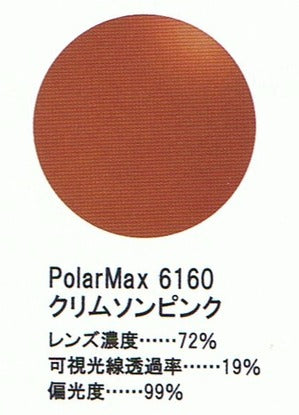Ask the person in charge of Kodak polarized lenses
What is a lens for fly fishing?

Of course, the important thing about polarized lenses is the degree of polarization.
Simply put, it is the rate at which light reflected from the water surface is blocked, and this is 99% for all of the seven colors recommended for fly fishing with Kodak polarized lenses.
When asked by a Kodak polarized lens representative, ``When making polarized lenses, there is a process called polymerization that involves applying heat to firmly adhere the fabric (lens raw material) and polarizing film.If the time at this time is short, the degree of polarization will increase. "However, the adhesion between the fabric and the polarizing film will decrease."
For Kodak polarized lenses, this time is strictly controlled by a program controller. As a result, they succeeded in creating a lens with excellent durability while maintaining a high degree of polarization.
Thanks to its advanced technology, even bright lenses such as olive green have a polarization degree of 99%.
It is a reliable lens for fishing in mountain streams covered by trees and in the evening.
"Olive green is also popular with fly fishers. I think it's safe to say that it's a standard color now. It brightens visibility even in dark valleys and enhances the contrast between light and dark."
"On the other hand, Tender Gray gives you a natural-looking view. This is because it cuts visible light wavelengths in a well-balanced manner, so it can be said to be an all-round lens."
"Finally, the color I personally would like many people to try is crimson pink. Pink may be surprising, but it makes fluorescent colors such as indicators and parachute posts easier to see."
Polarized glasses can now be considered a type of fishing gear, so you want to choose good lenses. Kodak lenses support you with a variety of innovations.





















